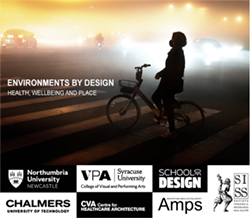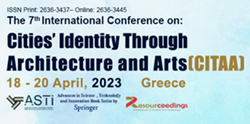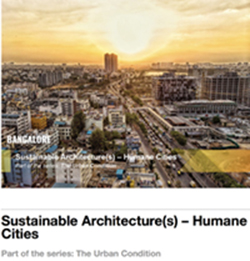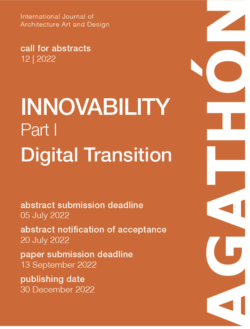May
2022
Jun
2022
Aug
2022
Sep
2022
Nov
2022
With major and unfortunate events such as hurricanes and earthquakes serving as a wakeup call to remind designers and city planners of the need to keep the long-term picture in mind when designing, the preparation of buildings to withstand possible disasters is a necessity. Today, the term “sustainability” often conjures up an image of an ecological approach. “Sustainability” literally means “to endure”. Any so-called “green” designs and plans that don’t stand the test of time are not truly sustainable. As our attention is turned towards climate changes, the possibility of increasingly likely disaster scenarios, resilient design serves to remind us to design for durability over time as well as being environment friendly. Resilient and responsible architecture is where the design process is initiated by careful thought into the typical usage scenarios of the building, common points of stress as well as the most likely disaster situations in the surrounding environment. The local environment always plays a critical role in determining the factors that make a building resilient or not, and so a resilient design is always specific to the geographical state. We know we can’t design for every unpredictable event, but we can make sure our buildings and cities are resilient and adaptable. In this regard, IEREK organizes the international conference on Resilient and Responsible Architecture and Urbanism (RRAU) – 5th Edition to highlight the role of architecture and urbanism in making our cities more resilient and sustainable. The RRAU is a great opportunity for researchers, designers, architects and planners to get involved in long-term thinking about worst-case disaster scenarios, as well as more common, everyday wear. Though the variables which contribute to resilience are many, and often complicated – the larger lesson is simple: buildings need to be resilient in order to be truly sustainable. Conference topics:
1.Resiliency on a Building Scale| Ramping Up Net Energy Zero Buildings; Reinforcing Existent Buildings to Achieve Resiliency; Geographical Effects on a Resilient City Buildings; Disaster Preparedness and Emergency Resilience;
2. Resiliency on a City Scale | Resilient Infrastructure; Architectural and Urban Challenges; Green Initiatives and Sustainable Urbanism; Energy Efficient Urban Areas; Development of Sustainable and Resilient Power Generation Systems; Adaptation and resilience in Natural disasters;
3. Resiliency on a Community Scale | Sustainable Economy and Well-being; Design of a Resilient Transit System; Resilience Hubs; Resilient Communication Systems; Meeting the demands of the city;
4. Resiliency on an Ecological Scale | Energy & Resource Cycle; Renewable Energy Sources; Water Management as Part of the Built Environment; Climate change and Global Challenges; Withstanding Extreme Weather and Natural Disaster;
5. Resiliency for the Future | Design for Change: The Resilient City; Sustainability and Resilience in the new world; Adaptive Landscapes: Risk, Ecology, and Education; Meeting the demands of the city; Risk management and Mitigation.
RRAU 2022 | 5th International Conference on Resilient and Responsible Architecture and Urbanism
With major and unfortunate events such as hurricanes and earthquakes serving as a wakeup call to remind designers and city planners of the need to keep the long-term picture in mind when designing, the preparation of buildings to withstand possible disasters is a necessity. Today, the term “sustainability” often conjures up an image of an ecological approach. “Sustainability” literally means “to endure”. Any so-called “green” designs and plans that don’t stand the test of time are not truly sustainable. As our attention is turned towards climate changes, the possibility of increasingly likely disaster scenarios, resilient design serves to remind us to design for durability over time as well as being environment friendly. Resilient and responsible architecture is where the design process is initiated by careful thought into the typical usage scenarios of the building, common points of stress as well as the most likely disaster situations in the surrounding environment. The local environment always plays a critical role in determining the factors that make a building resilient or not, and so a resilient design is always specific to the geographical state. We know we can’t design for every unpredictable event, but we can make sure our buildings and cities are resilient and adaptable. In this regard, IEREK organizes the international conference on Resilient and Responsible Architecture and Urbanism (RRAU) – 5th Edition to highlight the role of architecture and urbanism in making our cities more resilient and sustainable. The RRAU is a great opportunity for researchers, designers, architects and planners to get involved in long-term thinking about worst-case disaster scenarios, as well as more common, everyday wear. Though the variables which contribute to resilience are many, and often complicated – the larger lesson is simple: buildings need to be resilient in order to be truly sustainable. Conference topics:
1.Resiliency on a Building Scale| Ramping Up Net Energy Zero Buildings; Reinforcing Existent Buildings to Achieve Resiliency; Geographical Effects on a Resilient City Buildings; Disaster Preparedness and Emergency Resilience;
2. Resiliency on a City Scale | Resilient Infrastructure; Architectural and Urban Challenges; Green Initiatives and Sustainable Urbanism; Energy Efficient Urban Areas; Development of Sustainable and Resilient Power Generation Systems; Adaptation and resilience in Natural disasters;
3. Resiliency on a Community Scale | Sustainable Economy and Well-being; Design of a Resilient Transit System; Resilience Hubs; Resilient Communication Systems; Meeting the demands of the city;
4. Resiliency on an Ecological Scale | Energy & Resource Cycle; Renewable Energy Sources; Water Management as Part of the Built Environment; Climate change and Global Challenges; Withstanding Extreme Weather and Natural Disaster;
5. Resiliency for the Future | Design for Change: The Resilient City; Sustainability and Resilience in the new world; Adaptive Landscapes: Risk, Ecology, and Education; Meeting the demands of the city; Risk management and Mitigation.
Not declared
Advanced in Science, Technology & Innovation | IEREK Interdisciplinary Series for Sustainable Development








